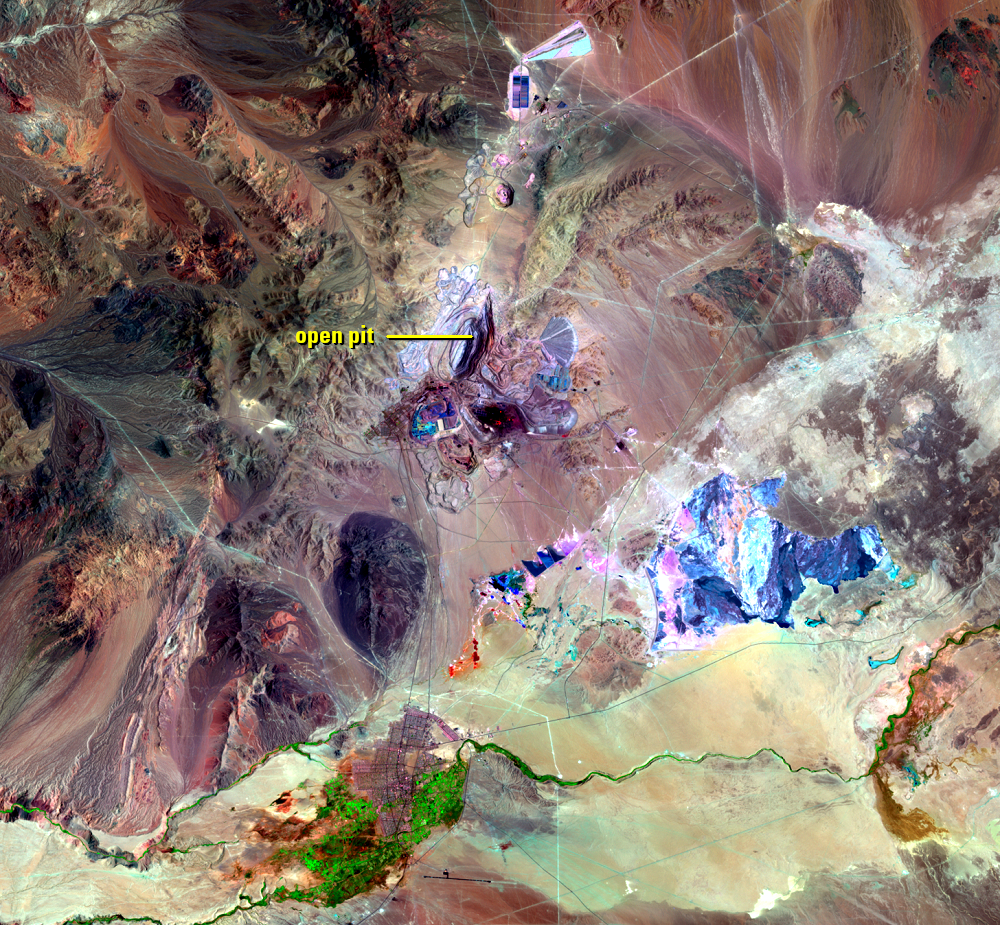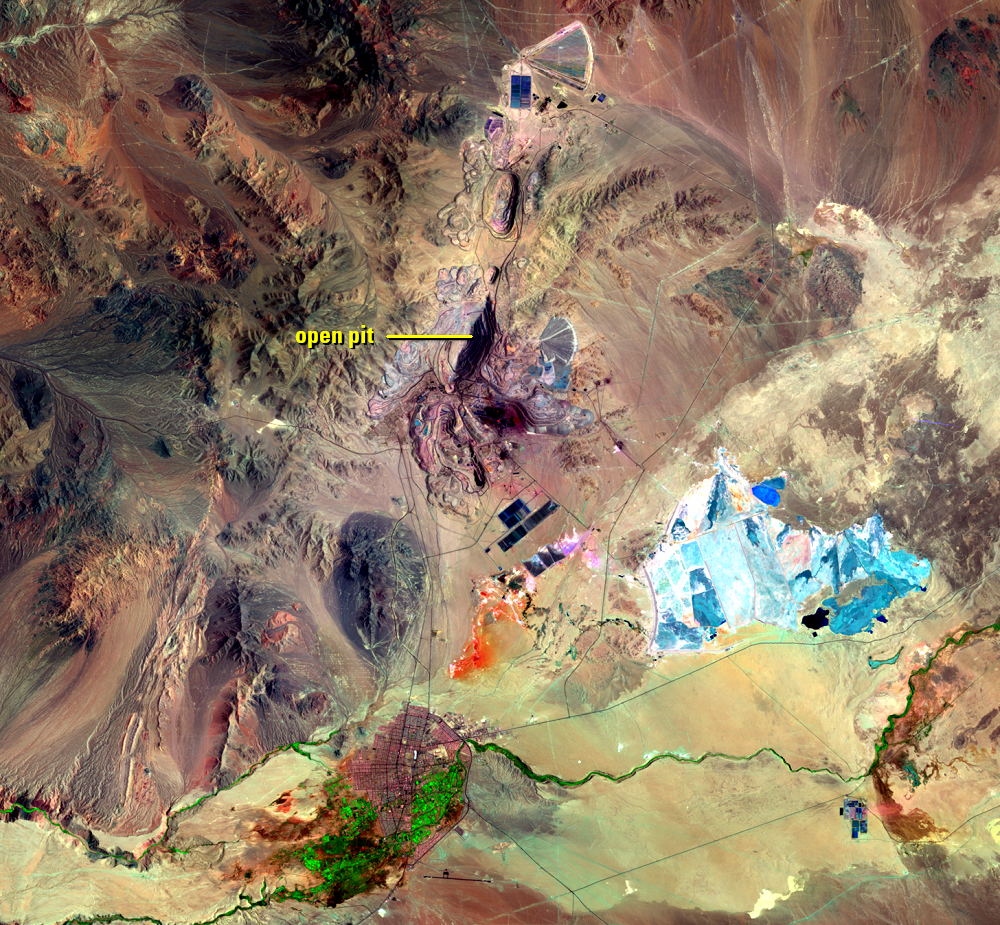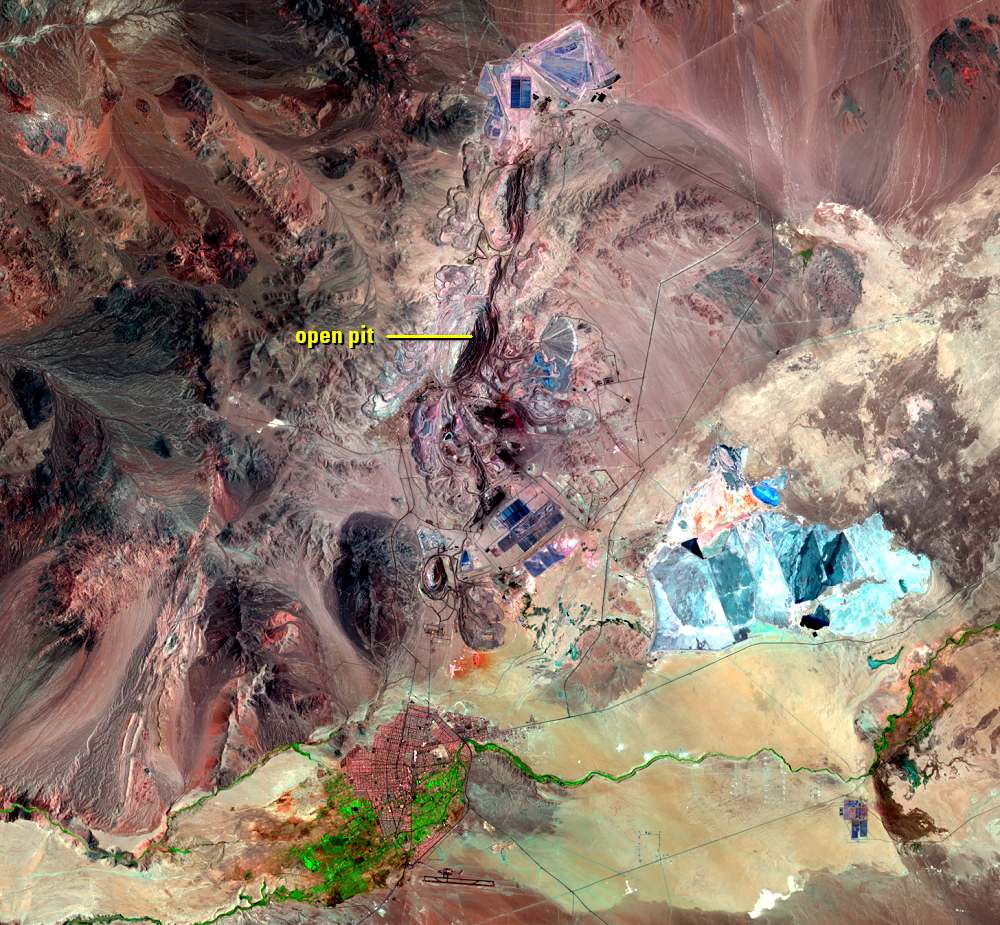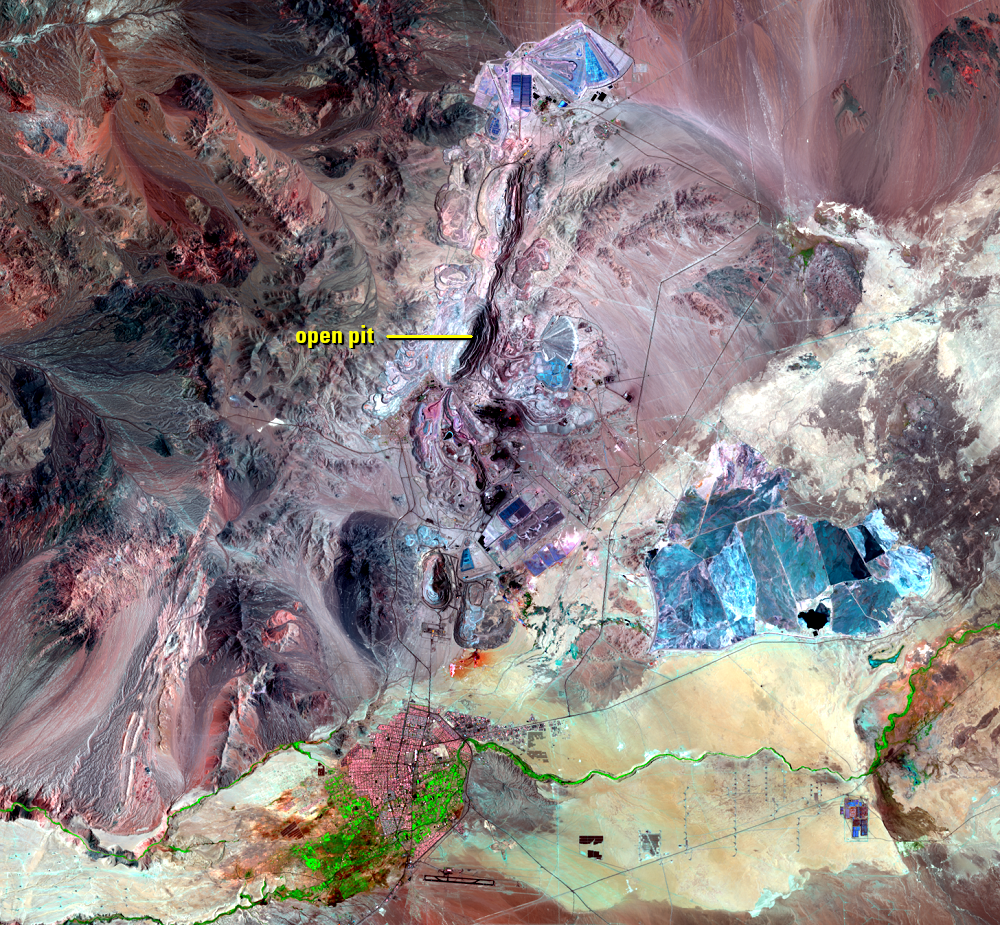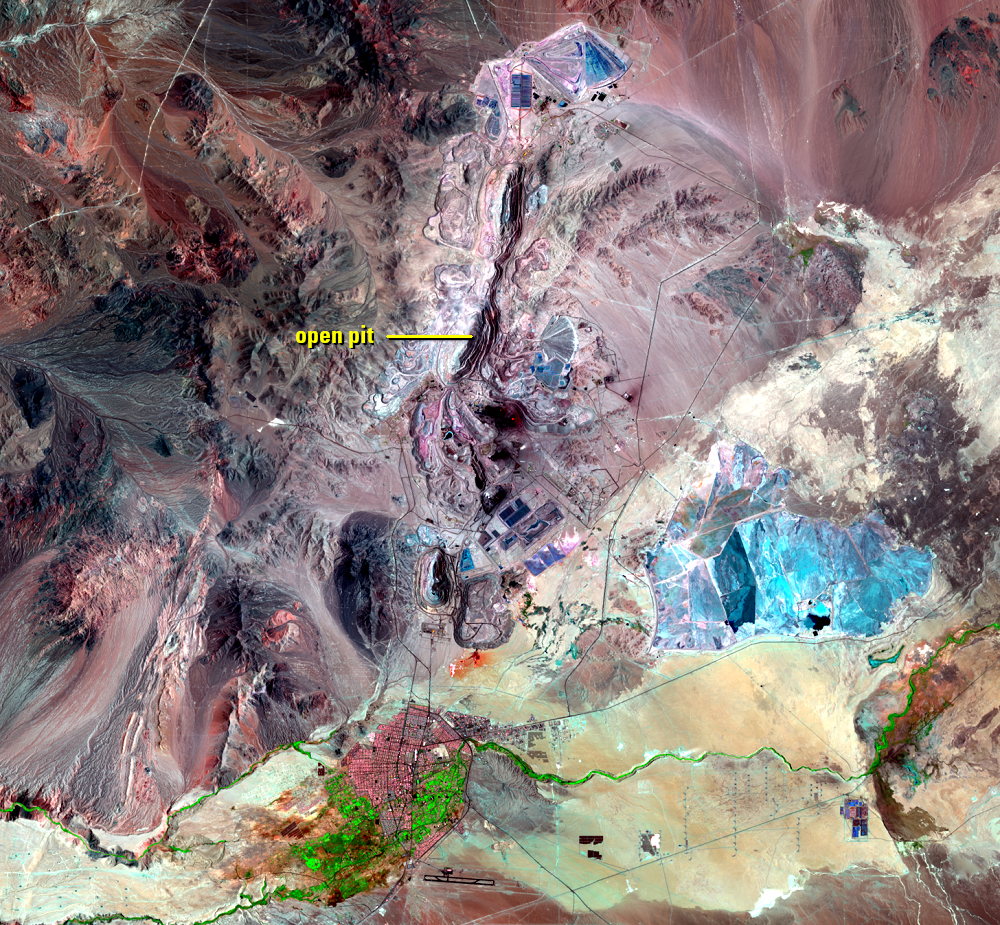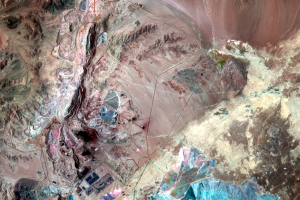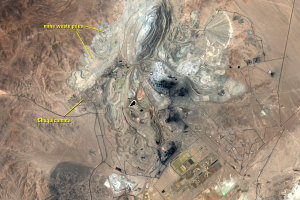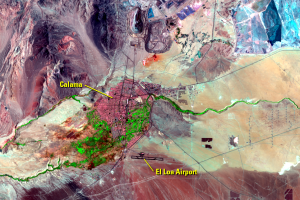
Chuquicamata Mine, Chile
Earth Resources Observation and Science (EROS) Center - Earthshots
The Atacama Desert of northern Chile has minimal vegetation. But it has ample mineral wealth: large amounts of copper, gold, silver, and other industrial metals. This includes the world’s largest open pit copper mine and the second deepest open pit—the Chuquicamata Mine.
In operation since 1910, the largest open pit at the mine measures 1 kilometer deep, 3 kilometers wide, and 5 kilometers long. New York City’s Central Park could fit inside it.
Evidence shows that copper has been extracted in the region for centuries. Indigenous people worked the copper deposits in pre-Hispanic times to make weapons and tools. The mine now produces 650,000 metric tons of copper annually.
Imagery
Downloads
Bastos, M., 2013, The City That Was Eaten by a Copper Mine: International Boulevard, accessed June 7, 2018, at http://www.internationalboulevard.com/the-city-that-was-eaten-by-a-copper-mine/.
Brinkhoff, T., 2018, Calama: City Population, accessed May 16, 2018, at https://www.citypopulation.de/php/chile-admin.php?adm2id=02201.
Egan, L., 2004, Chile Company Town Goes Dust to Dust: The Washington Post, accessed June 7, 2018, at https://www.washingtonpost.com/archive/politics/2004/02/01/chile-company-town-goes-dust-to-dust/5abc884e-5143-48ff-8fd0-87a70ad1d6e8/?utm_term=.d0f6b62c3efc.
From Here to Nowhere, 2015, Visiting Chuquicamata ghost town and mine: From Here to Nowhere, accessed June 7, 2018, at http://fromheretonowhere.com/south-america/visiting-chuquicamata-ghost-town-and-mine.
Lonely Planet, 2018, Calama: Lonely Planet, accessed May 16, 2018, at https://www.lonelyplanet.com/chile/northern-chile/calama.
Mining Technology, 2018, Chuquicamata Copper Mine: Mining Technology, accessed May 16, 2018, at https://www.mining-technology.com/projects/chuquicamata-copper.
NASA JPL, 2016, Chuquicamata Mine, Chile: NASA Jet Propulsion Laboratory, accessed May 16, 2018, at https://www.jpl.nasa.gov/spaceimages/details.php?id=PIA20973.
National Geographic, [n.d.], Violent Pacific—Chuquicamata Mine, Atacama Desert: National Geographic, accessed May 16, 2018, at http://www.nationalgeographic.com.au/videos/geologic-journey/violent-pacific-chuquicamata-mine-atacama-desert-1313.aspx.
Revuelta, M.B., 2018, Mineral Resources—From Exploration to Sustainability Assessment: Switzerland, Springer, 653p.
SISGEO, [n.d.], Chuquicamata Mine, Chile: SISGEO, accessed May 16, 2018, at https://www.sisgeo.com/projects/tunnels-and-underground-works/item/chuquicamata-mine-codelco-chile.html.
Smuda, J., Dold, B., Spangenberg, J.E., Friese, K., Kobek, M.R., Bustos, C.A., and Pfeifer, H.-R., 2014, Element cycling during the transition from alkaline to acidic environment in an active porphyry copper tailings impoundment, Chuquicamata, Chile: Journal of Geochemical Exploration, v. 140, DOI: 10.1016/j.gexplo.2014.01.013.


